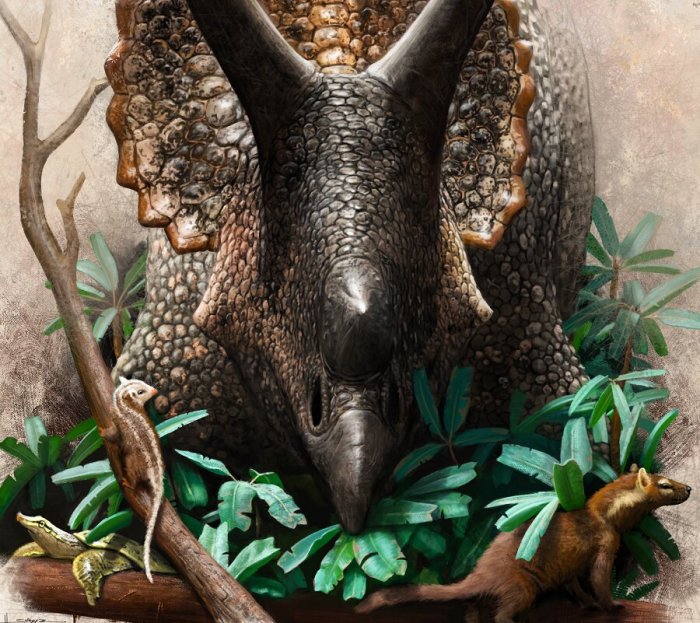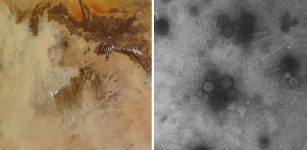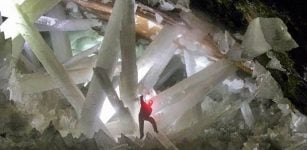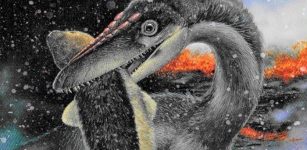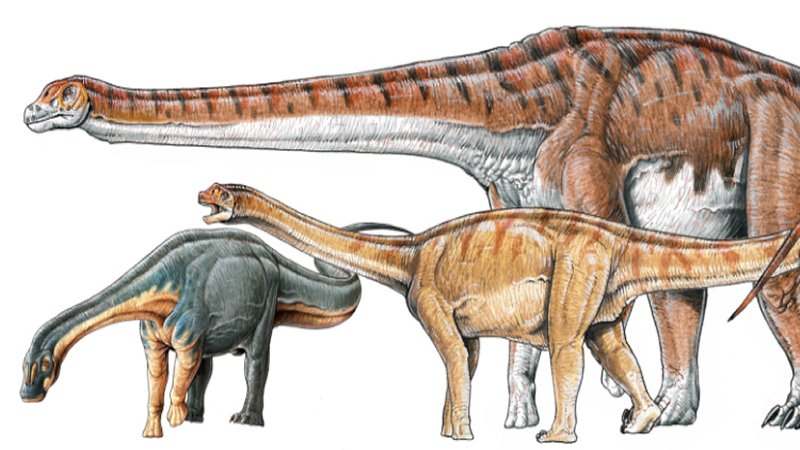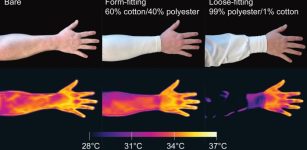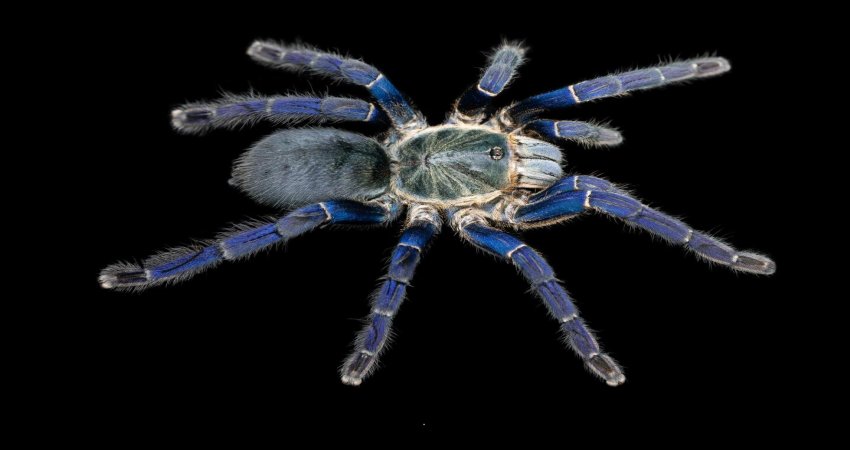Dinosaurs Were On The Up Before Asteroid Downfall – Study Finds
Eddie Gonzales Jr. – MessageToEagle.com – Scientists have long debated why non-bird dinosaurs, including Tyrannosaurus rex and Triceratops, became extinct—whereas mammals and other species such as turtles and crocodiles survived.
The new study, led by an international team of paleontologists and ecologists, analyzed 1,600 fossil records from North America.
Triceratops prorsus munching on cycads disturbs primitive cousins of placental (left) and marsupial (right) mammals in the underbrush—while a softshell turtle climbs up on a log, unaware that its freshwater ecology will shelter it from the impending doom from space. Credit: Henry Sharpe
Researchers modeled the food chains and ecological habitats of land-living and freshwater animals during the last several million years of the Cretaceous, and the first few million years of the Paleogene period, after the asteroid hit.
Paleontologists have known for some time that many small mammals lived alongside the dinosaurs. But this research reveals that these mammals were adapting to their environments and becoming more important components of ecosystems as the Cretaceous unfolded. Meanwhile, the dinosaurs were entrenched in stable niches to which they were supremely well adapted.
Mammals didn’t just take advantage of the dinosaurs dying, experts say. They were creating their own advantages through diversifying—by occupying new ecological niches, evolving more varied diets and behaviors and enduring small shifts in climate, by rapidly adapting. These behaviors probably helped them to survive, as they were better able than the dinosaurs to cope with the radical and abrupt destruction caused by the asteroid.
First author, Jorge García-Girón, Geography Research Unit, University of Oulu, Finland and Department of Biodiversity and Environmental Management, University of León, Spain, said, “Our study provides a compelling picture of the ecological structure, food webs, and niches of the last dinosaur-dominated ecosystems of the Cretaceous period and the first mammal-dominated ecosystems after the asteroid hit. This helps us to understand one of the age-old mysteries of paleontology: why all the non-bird dinosaurs died, but birds and mammals endured.”
Co-lead author, Alfio Alessandro Chiarenza, Department of Ecology and Animal Biology, University of Vigo, Spain, said, “It seems that the stable ecology of the last dinosaurs actually hindered their survival in the wake of the asteroid impact, which abruptly changed the ecological rules of the time. Conversely, some birds, mammals, crocodilians, and turtles had previously been better adapted to unstable and rapid shifts in their environments, which might have made them better able to survive when things suddenly went bad when the asteroid hit.”
Senior author, Professor Steve Brusatte, Personal Chair of Paleontology and Evolution, School of GeoSciences, University of Edinburgh, said, “Dinosaurs were going strong, with stable ecosystems, right until the asteroid suddenly killed them off. Meanwhile, mammals were diversifying their diets, ecologies and behaviors while dinosaurs were still alive. So it wasn’t simply that mammals took advantage of the dinosaurs dying, but they were making their own advantages, which ecologically preadapted them to survive the extinction and move into niches left vacant by the dead dinosaurs.”
The research is published in the journal Science Advances.
Written by Eddie Gonzales Jr. – MessageToEagle.com Staff

